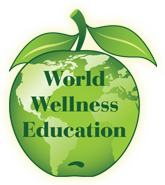 It seems that I have been writing about various super foods for some time. By now, you would think that I have been introduced to all of the important super foods that are available. But this week I learned about Moringa. Moringa is native to parts of Africa, India and Asia but is now cultivated in many parts of the world.
It seems that I have been writing about various super foods for some time. By now, you would think that I have been introduced to all of the important super foods that are available. But this week I learned about Moringa. Moringa is native to parts of Africa, India and Asia but is now cultivated in many parts of the world.
Moringa is an incredibly fast growing tree. Its leaves, bark, flowers, fruit, seeds and roots are all edible. The leaves are rich in protein and this is a plant that contains all of the essential amino acids that we need for good health. The leaves can be dried and ground into a powder that contains seven times the amount of vitamin C typically found in oranges, four times the amount of vitamin A in carrots, 36 times the amount of magnesium in eggs, 25 times the amount of iron in spinach, 50 times the amount of vitamin B3 in peanuts, and 50 times the vitamin B2 in bananas. This powder does not spoil and thus may be important in the long term survival of the human race.
Its seeds contain up to 40 percent of a non-drying, edible oil known as “Ben Oil” that is rich in antioxidants and similar in its nutritional profile to olive oil. The clear, sweet, odorless oil also has an indefinite shelf life, as it does not turn rancid like many other oils.
The remaining components of the tree along with the leaves and seeds are known to have anti-diabetic, anti-hypertensive, anti-inflammatory, anti-microbial, anti-viral, anti-parasitic, anti-tumor, and anti-aging activities.
Moringa is an important food source in some parts of the world because it can be grown cheaply and easily, and the leaves retain lots of vitamins and minerals when dried. Moringa is used in India and Africa in feeding programs to fight malnutrition. The immature green pods are prepared similarly to green beans, while the seeds are removed from more mature pods and cooked like peas or roasted like nuts. The leaves are cooked and used like spinach, and they are also dried and powdered for use as a condiment.
The seed cake remaining after oil extraction is used as a fertilizer and also to purify well water and to remove salt from seawater.
As a medicine Moringa is used for anemia, arthritis, rheumatism, asthma, cancer, constipation, diabetes, diarrhea, epilepsy, stomach pain, stomach and intestinal ulcers, intestinal spasms, headache, heart problems, high blood pressure, kidney stones, fluid retention, thyroid disorders, and bacterial, fungal, viral, and parasitic infections. It is also used to reduce swelling, as an aphrodisiac, to prevent pregnancy, boost the immune system and increase breast milk production.
Moringa is sometimes applied directly to the skin as a germ-killer or drying agent. It is also used topically for treating pockets of infection, athlete’s foot, dandruff, gum disease, snakebites, warts, and wounds.
You can purchase moringa powder or seeds on the internet. I am attempting to grow my own tree. We will see how that works out………….
 Jean Sumner has pursued an interest in wellness her entire life. An avid runner, she is passionate about exercise, eating healthy and maintaining a healthy lifestyle. Jean was diagnosed with cancer in May, 2009 this only served to fuel the flames of her passions and encouraged her to learn more about wellness. This diagnosis actually led to the beginning of World Wellness Education with a mission of “Teaching the world about wellness — one story at a time.”
Jean Sumner has pursued an interest in wellness her entire life. An avid runner, she is passionate about exercise, eating healthy and maintaining a healthy lifestyle. Jean was diagnosed with cancer in May, 2009 this only served to fuel the flames of her passions and encouraged her to learn more about wellness. This diagnosis actually led to the beginning of World Wellness Education with a mission of “Teaching the world about wellness — one story at a time.”
As Jean pursued alternative methods of treating cancer she met countless individuals who had great stories to tell regarding how nutrition, spirituality and exercise helped them to overcome their various illnesses. Since these stories were moving, motivating and timely she thought that each of these stories may make a difference in others’ lives. With the knowledge that we learn from stories more quickly than other teaching methods an organization was born in hopes to make a difference in the well-being of every individual on the planet.
Prior to Jean’s involvement with World Wellness Education she was a bank manager. With the significant change that was going on in the banking industry, Jean learned that her staff did much better with change if they took it one step at a time. She has now transferred this learning to the Wellness industry and created small weekly changes that one can make which will lead up to a significant amount of positive change by the end of the year.
This information is not meant to be medical advice. No action or inaction should be taken solely on the contents of this information. Instead, you should consult appropriate health professionals on any matter relating to your health and well-being.








My brother suggested I would possibly like this blog.
He was entirely right. This post truly made my day.
You can not believe just how much time I had spent for this
info! Thank you!